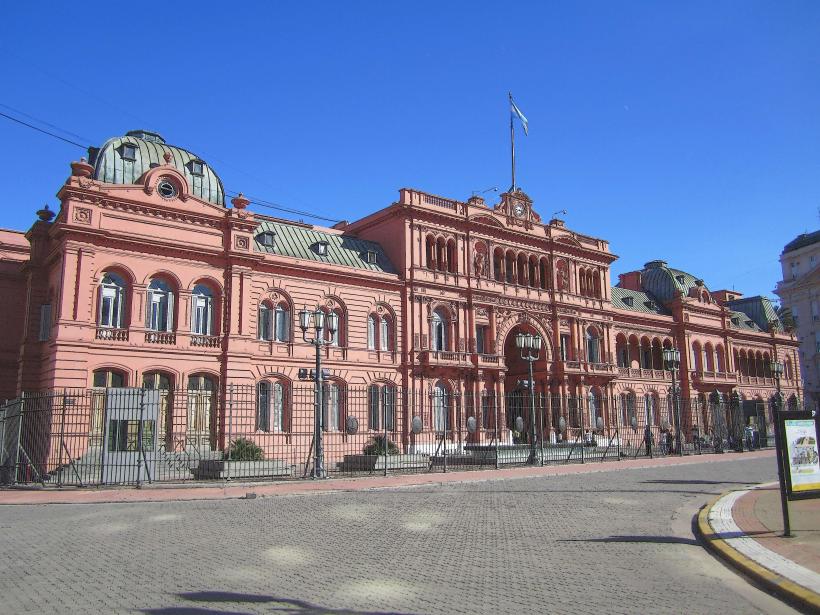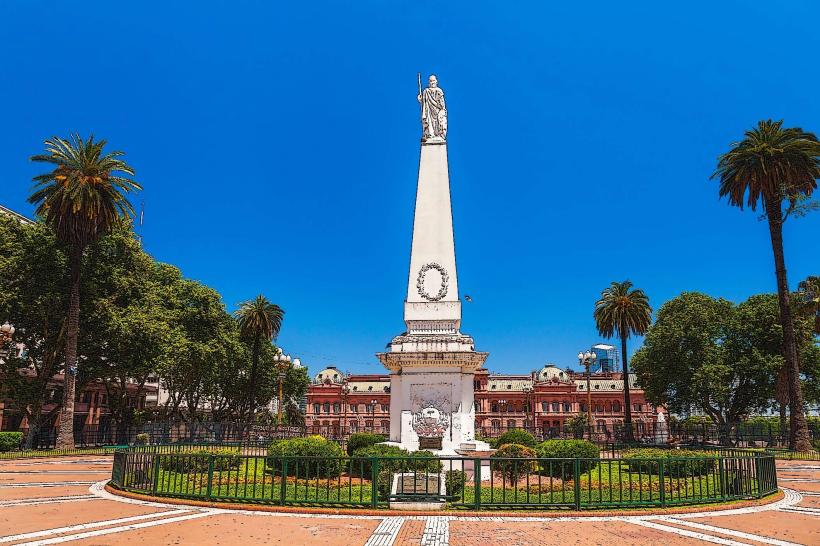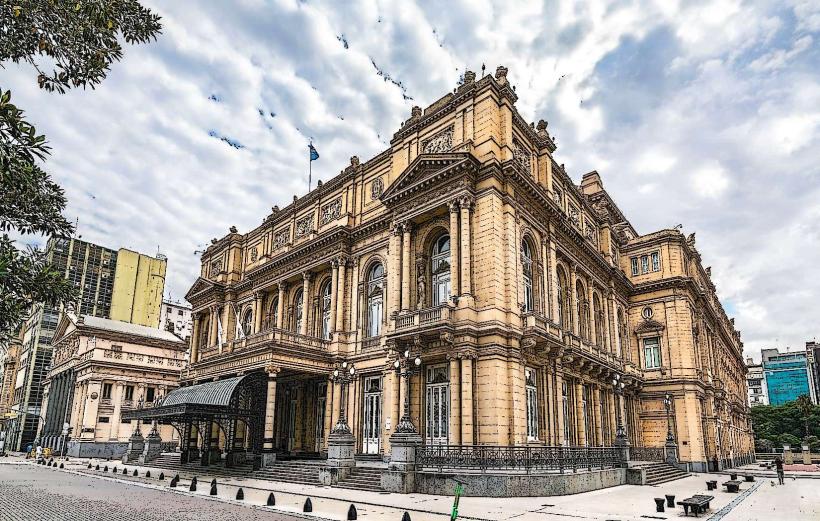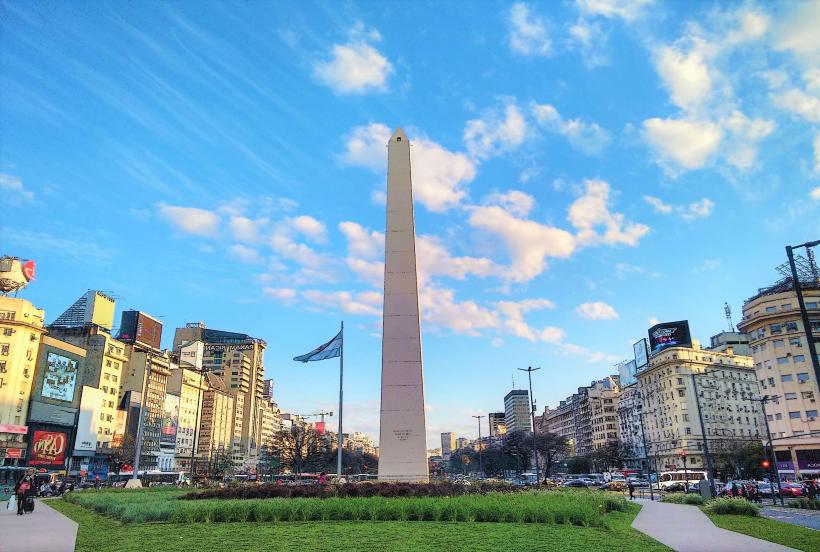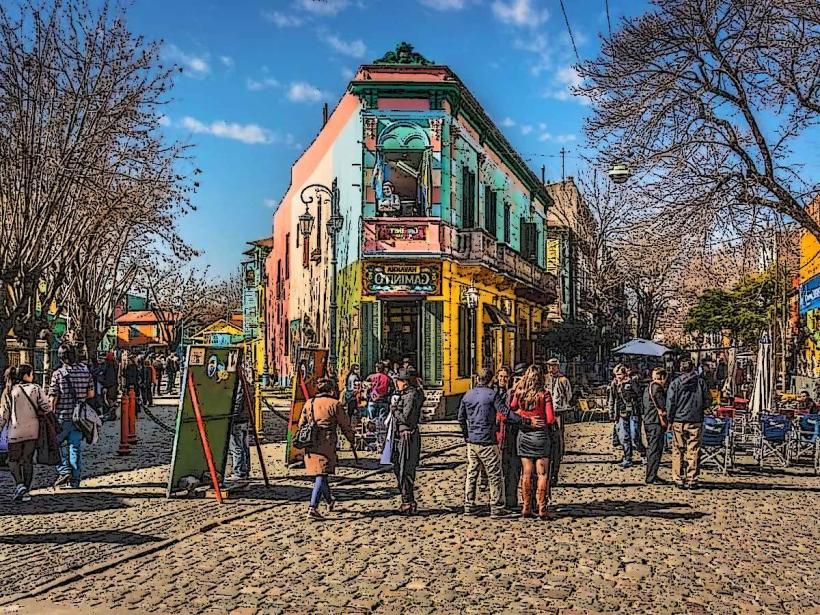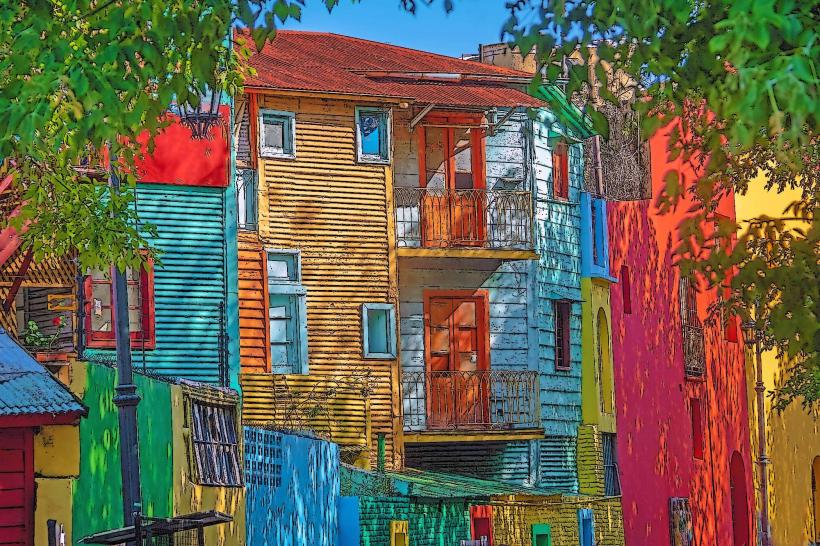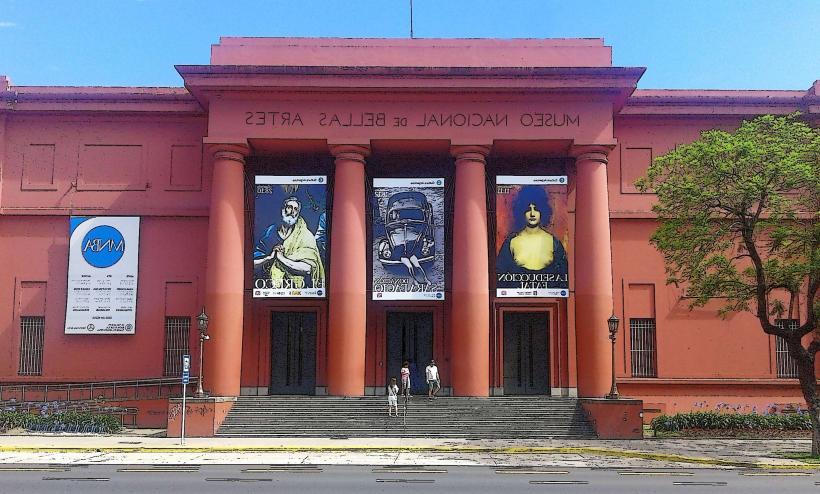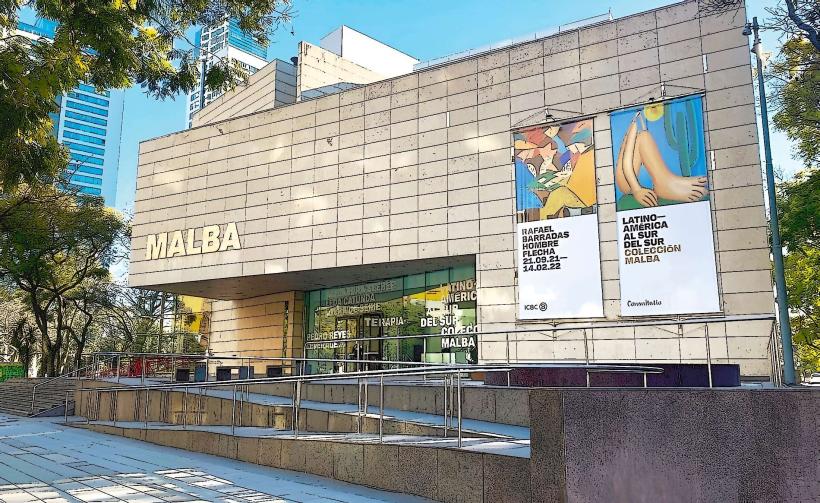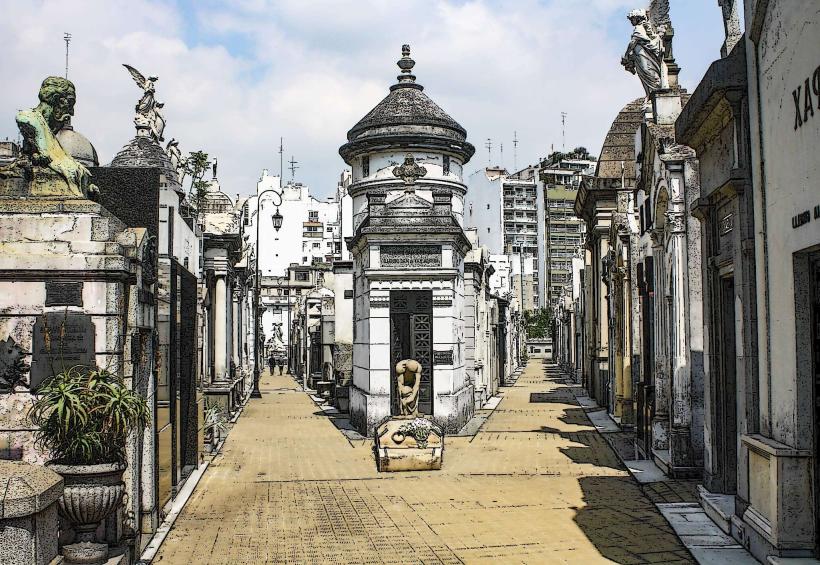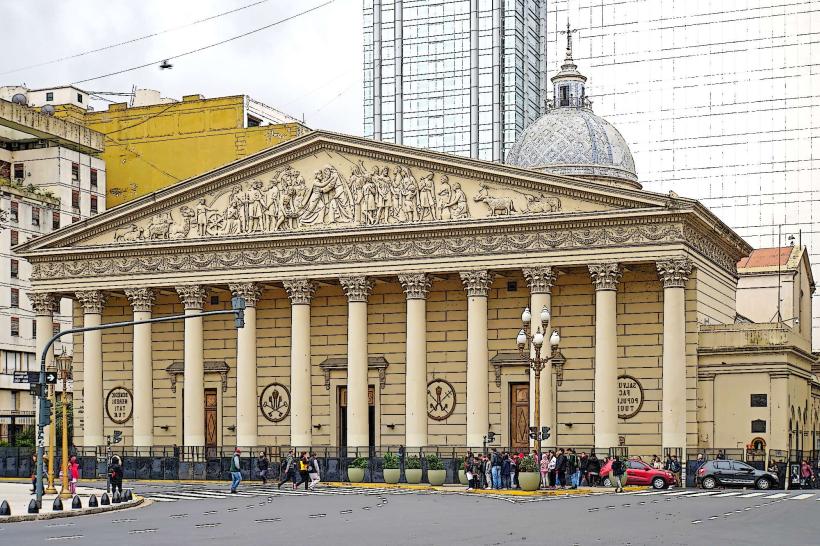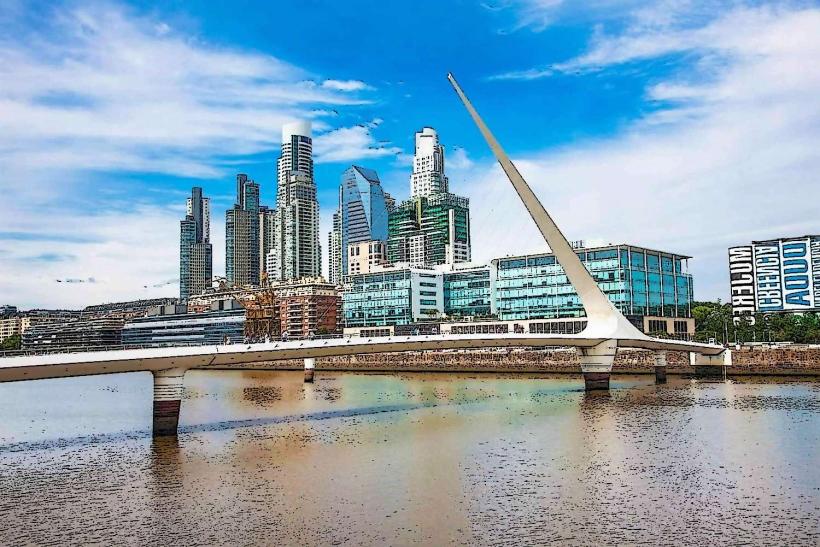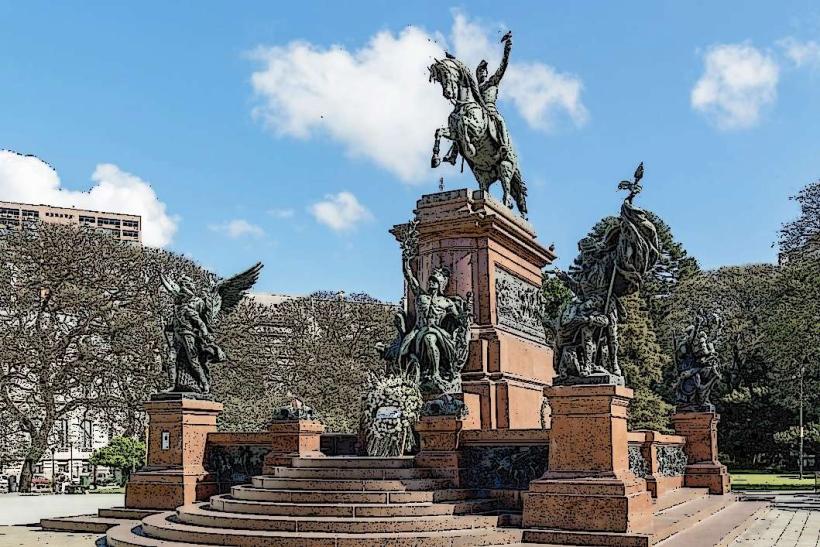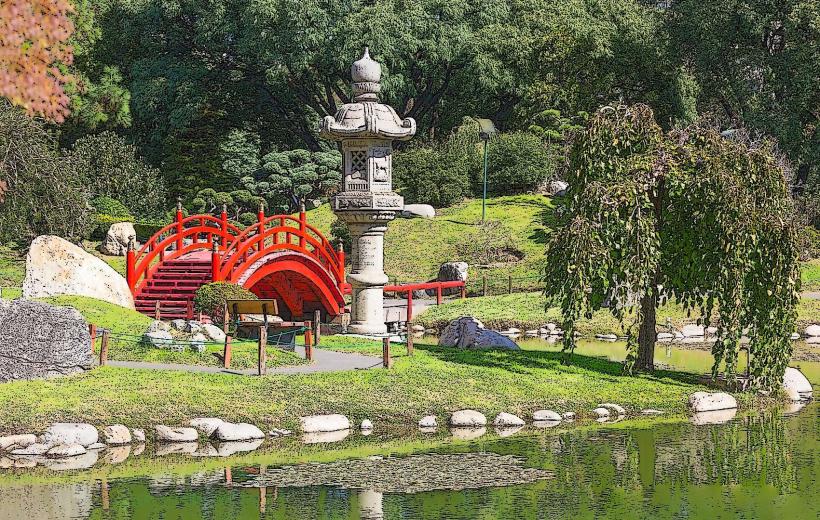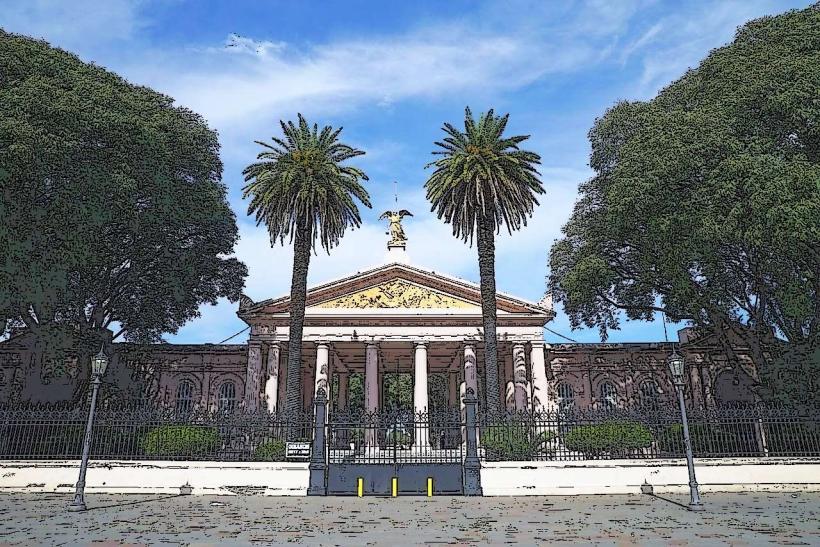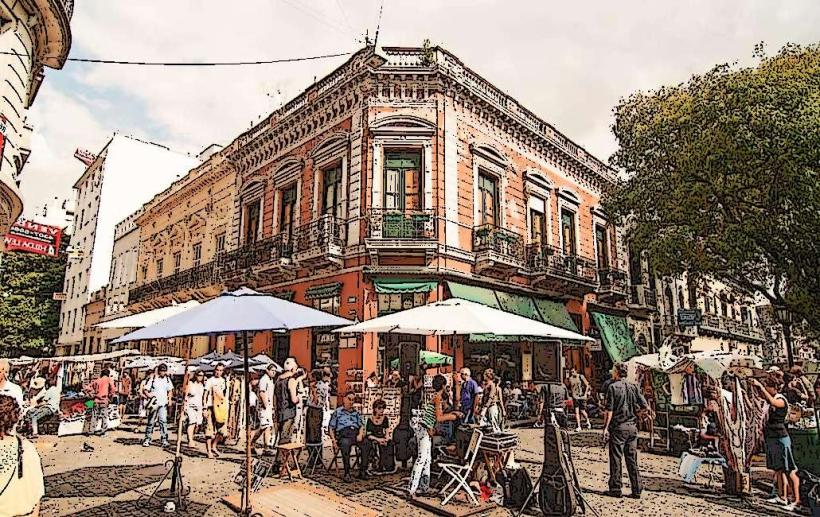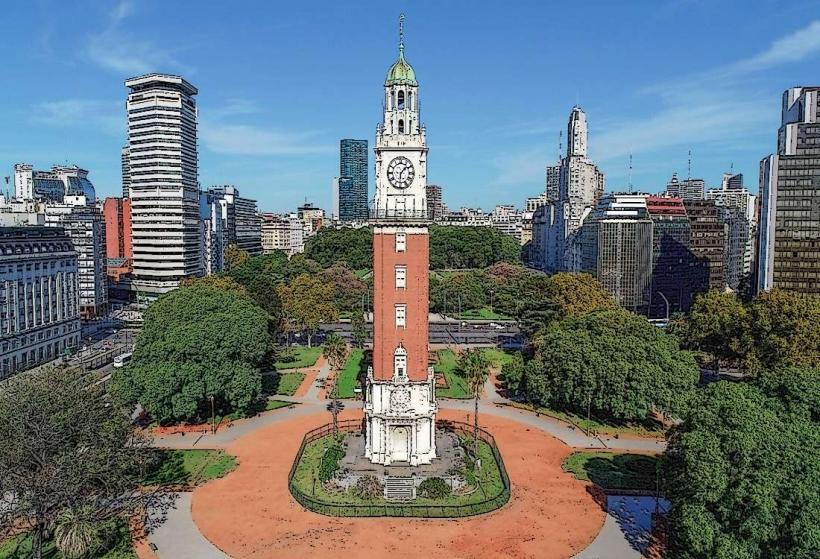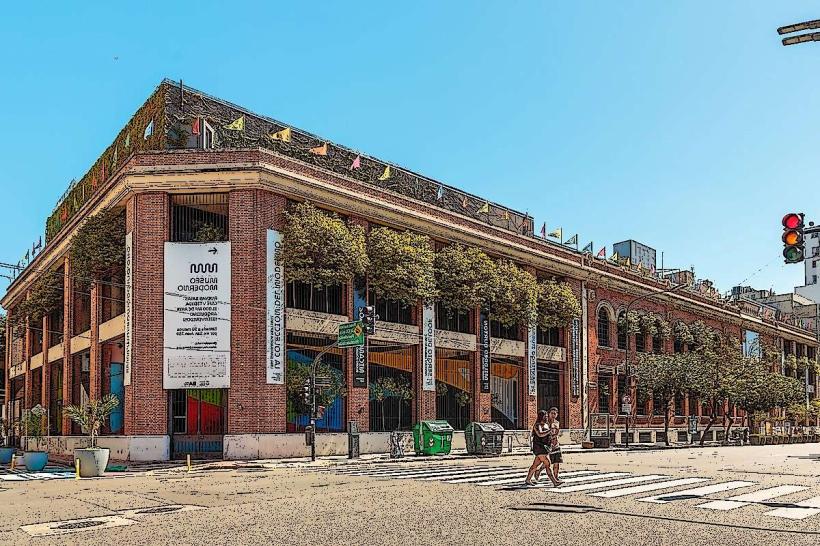Information
Landmark: Congreso de la Nación ArgentinaCity: Buenos Aires
Country: Argentina
Continent: South America
Congreso de la Nación Argentina, Buenos Aires, Argentina, South America
Overview
Congreso de la Nación Argentina (National Congress of Argentina) is one of the most important and iconic buildings in Buenos Aires and serves as the seat of the country's legislative branch. It plays a key role in Argentina's democracy and political life, housing both the Chamber of Deputies and the Senate.
1. Historical Background
- The Congreso de la Nación Argentina was inaugurated on May 12, 1906, although the idea of building a legislative building had been discussed for decades earlier. The construction of the Congress building was part of a broader effort to symbolize Argentina’s modernization and strength at the beginning of the 20th century.
- The building was designed by the architects Vittorio Meano and Julio Dormal, and its construction began in 1898. The design blends elements of neoclassical architecture with influences from both French Beaux-Arts style and Italian Renaissance.
- The Congreso is located in the Monserrat neighborhood, near Plaza de los dos Congresos, a large public square that serves as the building’s main entrance and is a popular gathering spot for political protests and public demonstrations.
2. Architectural Features
- The Congreso is a grand neoclassical building that features a dome, which is one of the most striking features of its design. The dome is inspired by the Pantheon of Rome and is adorned with statues and ornate decorations.
- The facade of the building is marked by twin columns and sculptural details, including allegorical figures representing the law, justice, and freedom, highlighting the importance of the legislative process in Argentine society.
- The building’s interior is just as impressive, with marble floors, elaborate chandeliers, and painted ceilings, all of which give the Congress a feeling of grandeur and historical importance.
- Inside, the Chamber of Deputies and the Senate meet in large, elegant chambers. The Chamber of Deputies is characterized by its semi-circular seating arrangement, while the Senate chamber features a more traditional layout with a rectangular floor plan.
3. Key Features and Symbolism
- Dome: The large green dome that crowns the Congreso building is perhaps its most recognizable feature. This dome is made of copper and has become a symbol of the country's legislative authority.
- Statues and Sculptures: The exterior and interior of the building are adorned with sculptures representing important figures from Argentina’s history, including independence leaders and national heroes. These artistic elements add to the building’s sense of national pride.
- Frescoes: Inside the building, you’ll find magnificent frescoes and paintings, some of which depict key moments in Argentina’s history, such as the creation of the Constitution and the country's struggle for independence.
- National Assembly Hall: The main hall of the building, also known as the National Assembly Hall, is the site of official sessions of Congress. This room has high ceilings, elegant woodwork, and a large statue of Justice as a focal point. It is where many of the country’s key political and legislative decisions are made.
4. Political and Cultural Significance
- The Congreso de la Nación is where the bicameral Argentine National Congress meets, consisting of two chambers:
- The Chamber of Deputies (Lower House): This chamber consists of 257 members, who are elected every four years. Deputies represent the people of Argentina, and their role is to introduce, debate, and vote on legislation.
- The Senate (Upper House): The Senate consists of 72 members and represents the provinces and the City of Buenos Aires. Senators serve six-year terms and play a crucial role in approving or rejecting laws.
- The building is central to the legislative process in Argentina, with laws and constitutional amendments debated and passed here. The Congress also serves as a venue for important political events and debates that shape Argentina’s future.
- The Congress building symbolizes the country’s commitment to democracy and political stability. It is a powerful symbol of the sovereignty of the Argentine people and the importance of representative government.
5. Public Square and Accessibility
- Plaza de los dos Congresos (Plaza of the Two Congresses), the square in front of the Congress, is a key site for public gatherings, protests, and political events. Over the years, the plaza has been the backdrop for numerous significant moments in Argentine history, from political protests to national celebrations.
- The Congress building is easily accessible to the public, and visitors can take guided tours to explore its grand halls, learn about the legislative process, and admire its architectural beauty.
- The Plaza in front of the Congress features fountains, green spaces, and statues, creating a lovely atmosphere for tourists and locals to enjoy the area. It’s a common spot for people to gather, relax, or participate in political demonstrations.
6. Tourism and Visiting
- Guided Tours: The Congreso de la Nación offers guided tours, allowing visitors to explore its stunning architecture, learn about the Argentine legislative system, and discover its rich history. The tours are available in both Spanish and English.
- Tourism Focus: The building is one of the must-see landmarks for tourists visiting Buenos Aires. It is not only a place of political importance but also an architectural marvel that showcases the country’s historical and artistic heritage.
- Visitors can also attend sessions of Congress, though this typically requires special permission or an invitation, as it is a working governmental institution.
7. Surrounding Area
- The Congreso is situated in a busy and vibrant area of Buenos Aires, which is home to several important buildings and sites. Nearby, you’ll find Avenida de Mayo, a grand avenue lined with historic architecture and cultural landmarks.
- The area is also close to other popular attractions such as Café Tortoni, one of the oldest and most famous coffee shops in Buenos Aires, and Plaza de Mayo, another central public square that holds historical significance.
- Cultural Events: The area around the Congress is often host to various cultural events, including art exhibitions, public concerts, and national celebrations. It is a dynamic space where Argentine culture and history come to life.
8. Conclusion
The Congreso de la Nación Argentina is not only a key government building but also an architectural masterpiece and a symbol of Argentina’s rich democratic traditions. Whether you’re interested in political history, architecture, or cultural significance, the National Congress is an essential part of any visit to Buenos Aires. Its monumental dome, historical chambers, and symbolic importance make it one of the city's most fascinating landmarks.

